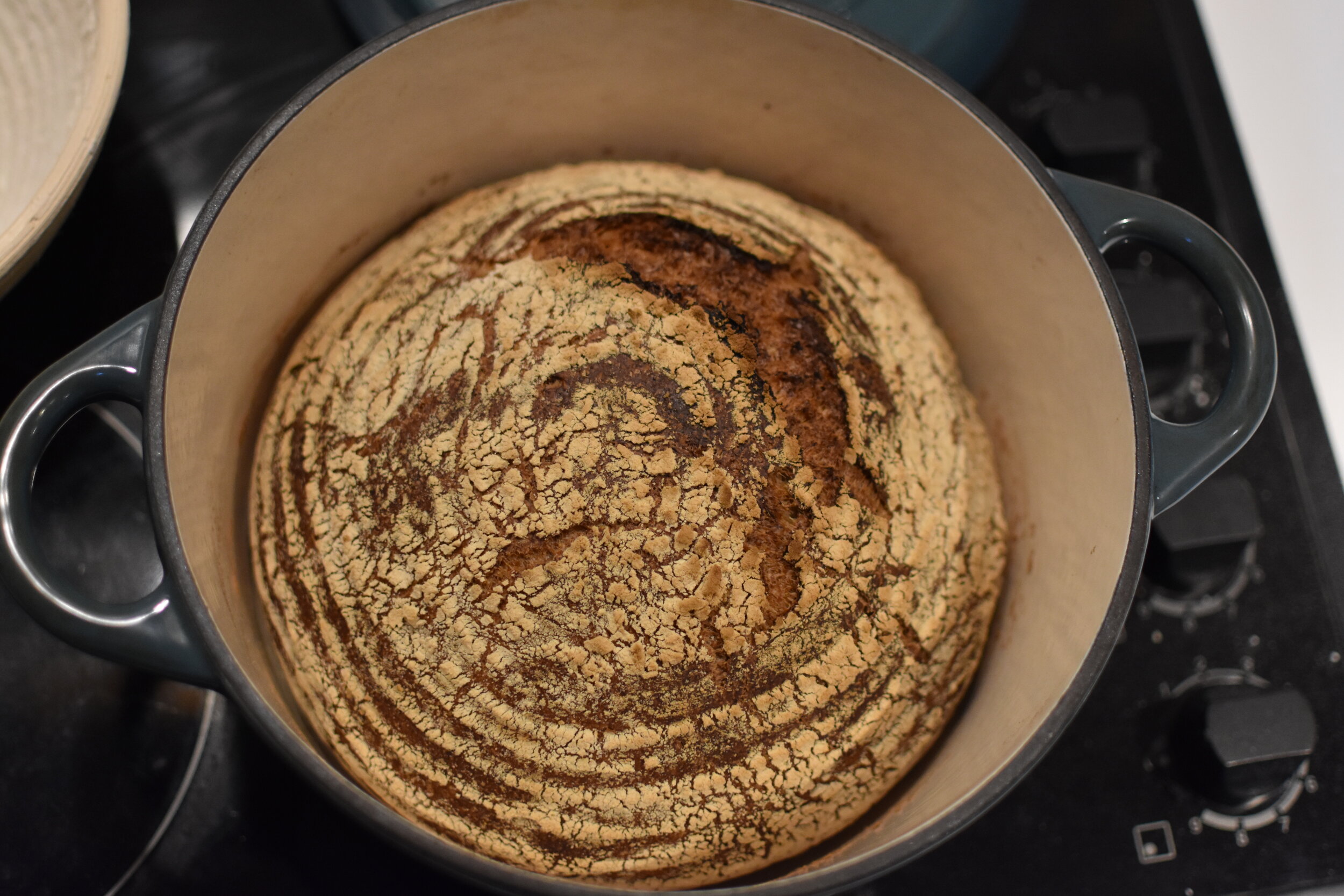wholemeal & spelt sunday loaf
photo: wholemeal & spelt loaf
based on another recipe from the ken forkish bread baking bible flour salt water yeast, making this loaf is a great way to spend a lazy sunday baking some tasty bread in a cosy kitchen. the recipe originally calls for 75% wholemeal flour, but i decided to mix it up and throw in some spelt flour to lend a more nutty flavour to the bread. the final quantities were around 35% wholemeal, 40% spelt and 25% white flour.
i’m happy that i made the addition of spelt flour to the loaf, as a pure wholemeal loaf isn’t necessarily my favourite flavour of bread. the spelt added a sweetness and nuttiness to the taste of the bread, which would make the bread perfect to be topped with honey, jams or marmalades - marmite is still my topping of choice though!
the bake
as the name may suggest, this recipe takes a full day to make. there is no preferment to be used, which means that the step is simply autolysis of the flour and water. this gives the flour a chance to hydrate and break down before the addition of the yeast and salt. as wholemeal flour is typically more absorbent than white flour, this recipe has slightly more water in than the white saturday loaf. i was initially concerned that as i had substituted in some spelt flour, this would mean that the amount of water required would change, as spelt flour does not need as much water as wholemeal. however, the dough came together quite nicely and i was actually pleasantly surprised by the consistency of the dough throughout the folds and when shaping.
after mixing in the yeast and salt, the bread goes through around 5 hours of bulk fermentation, with three folds performed during the first hour and a half of the fermentation time. over the course of the bulk fermentation, the bread grew and bubbled until it was around three times the original size of the mix. the dough wasn’t the wettest dough, which meant that it was surprisingly easy to shape and handle. i’m becoming more fearless in my shaping of the loaves, and i genuinely think that dough can sense fear, as when you are shaping with confidence the bread is much easier to handle.
whilst the bread proves in the proving baskets, the oven is preheated to around 245 degrees celsius with the dutch oven/casserole dish in the oven to preheat as well. after an hour and a quarter, or once a finger pressed into the dough leaves the dough almost springing back all the way but with a slight dent, the bread is turned out onto a floured surface and lifted in one smooth movement to be dropped into the preheated casserole dish - be careful not to touch the pot here as it will be very hot!
after half an hour of cooking, the lid comes off the pot to hopefully reveal a beautifully risen loaf, which is then placed back into the oven for 15-20 mins, until the crust is a nice deep brown colour.
the bread should be left to cool for at the very least 20 minutes after coming out of the oven, as it will still continue to bake inside during this time from the residual heat. the bread is perfect whilst still slightly warm, smothered in butter and a sprinkle of flaky sea salt.
i cannot wait for the warmer months to return, as this bread will be perfect toasted and topped with some extra virgin olive oil, mozzarella, sliced tomatoes fresh from the vine and some basil leaves, accompanying a nice cold glass of crisp white wine.
you can purchase flour water salt yeast and find the recipe here.









